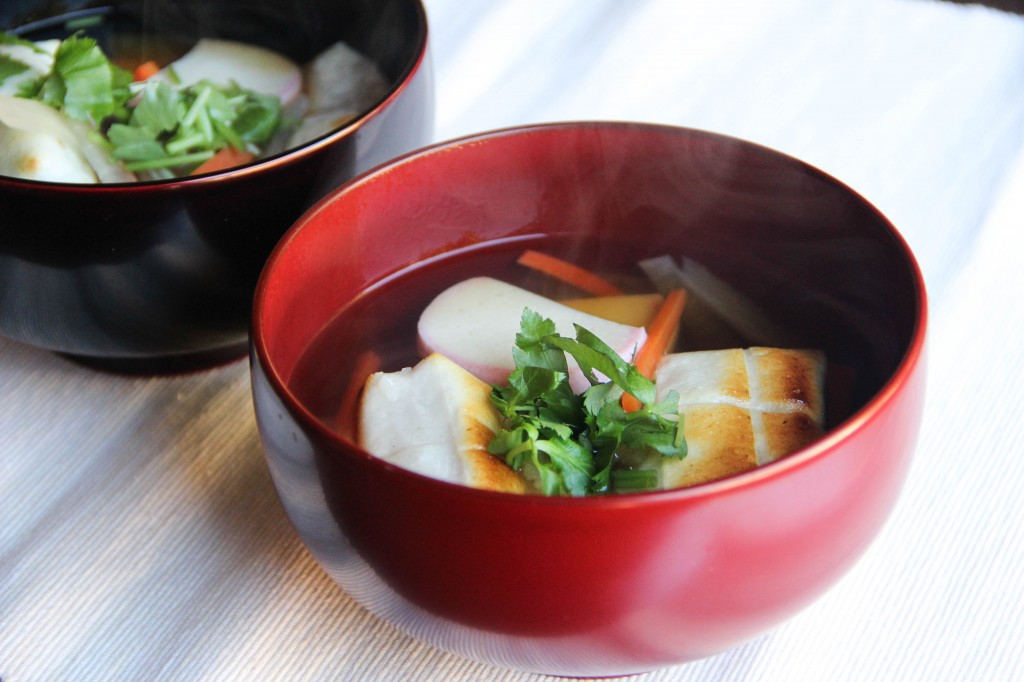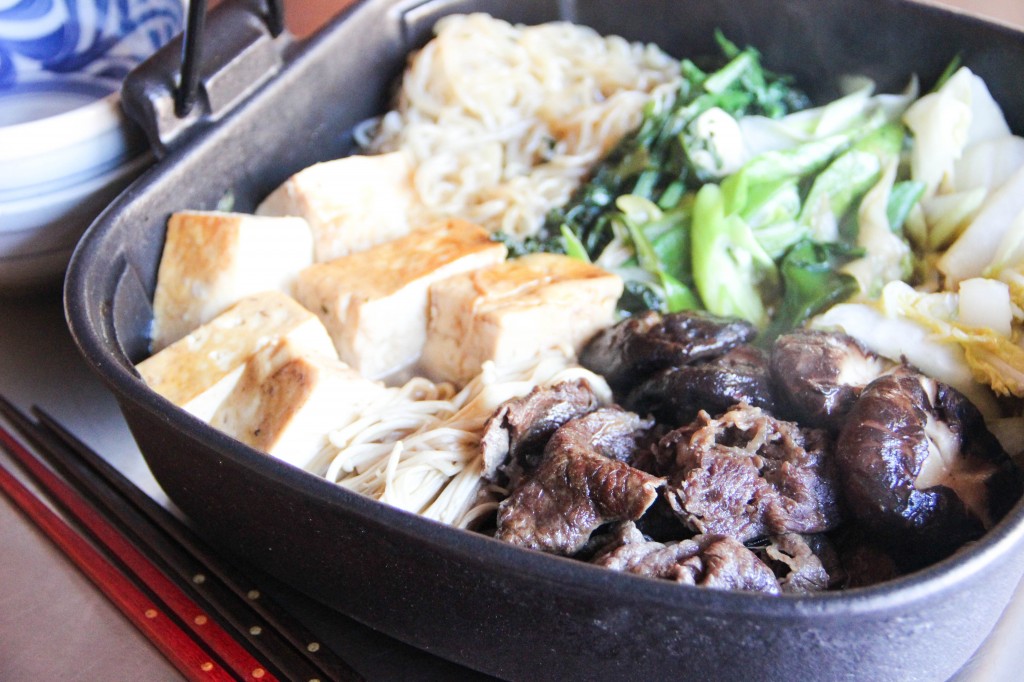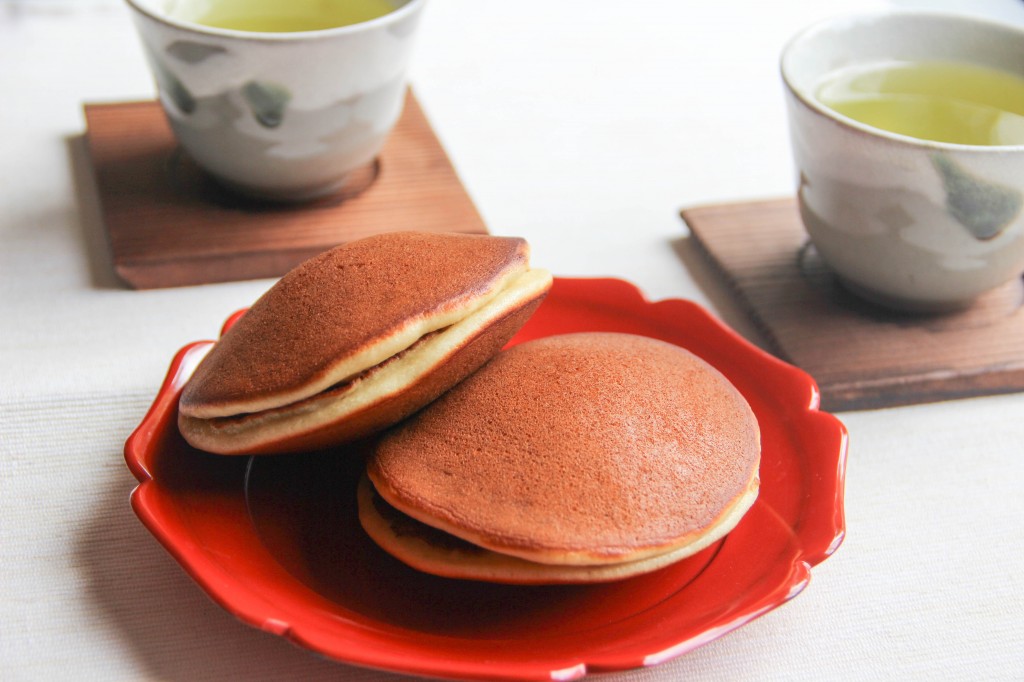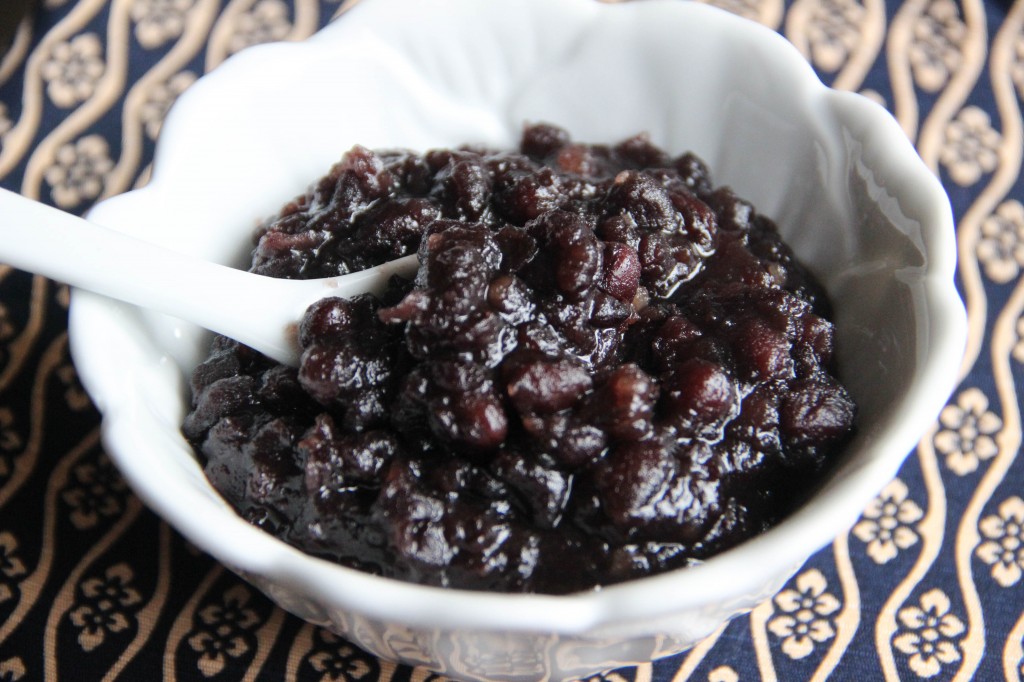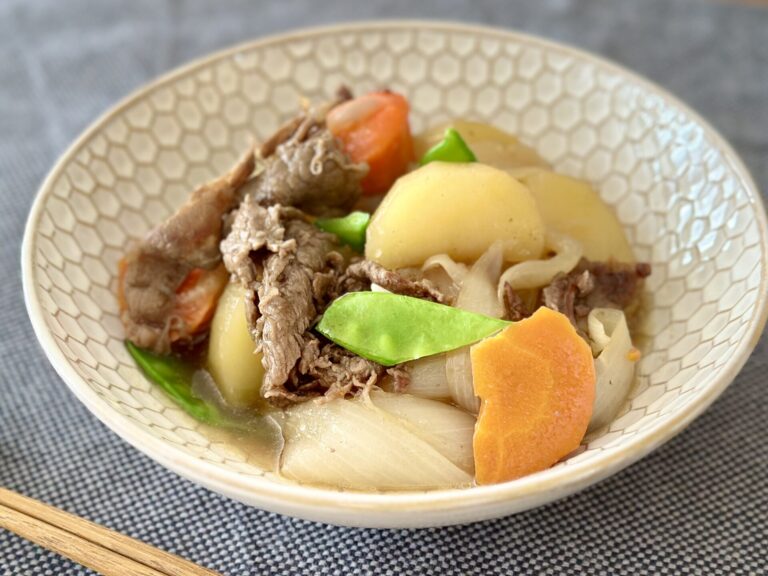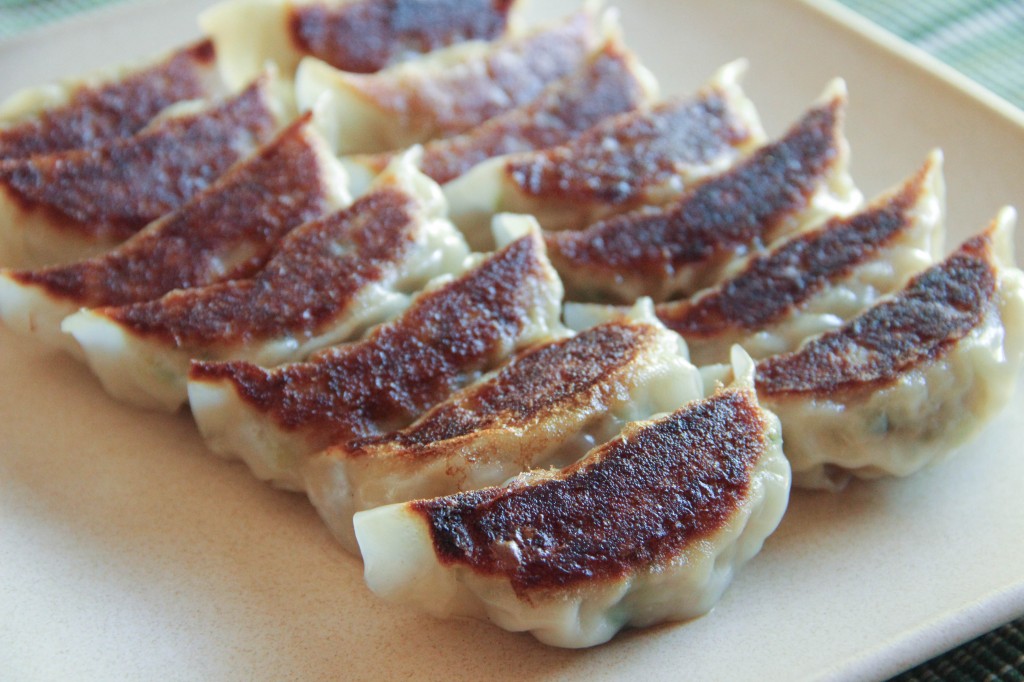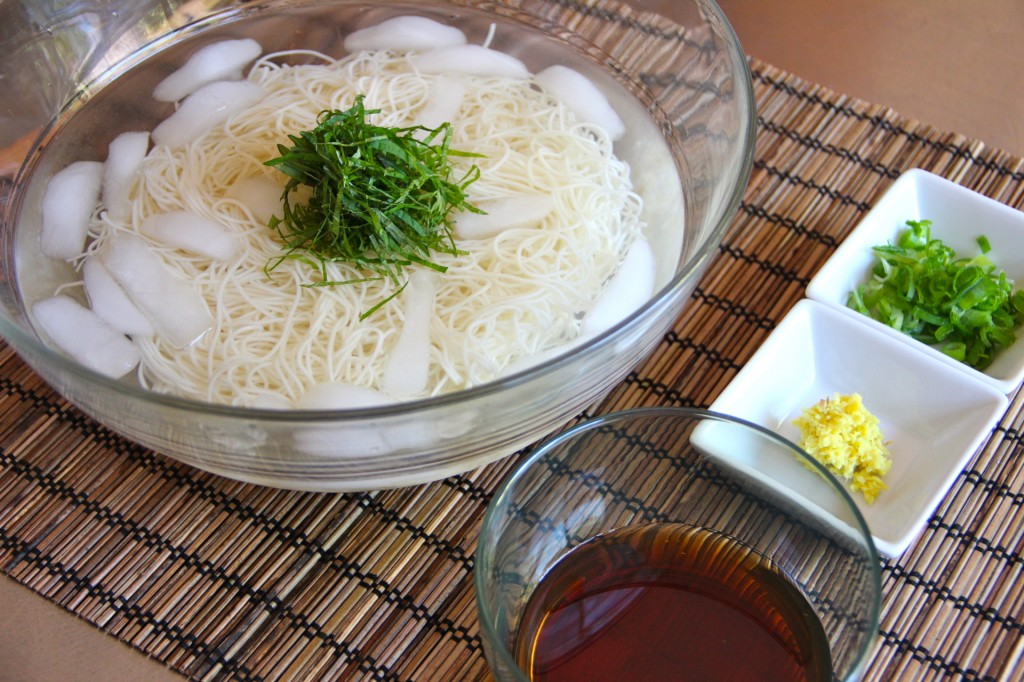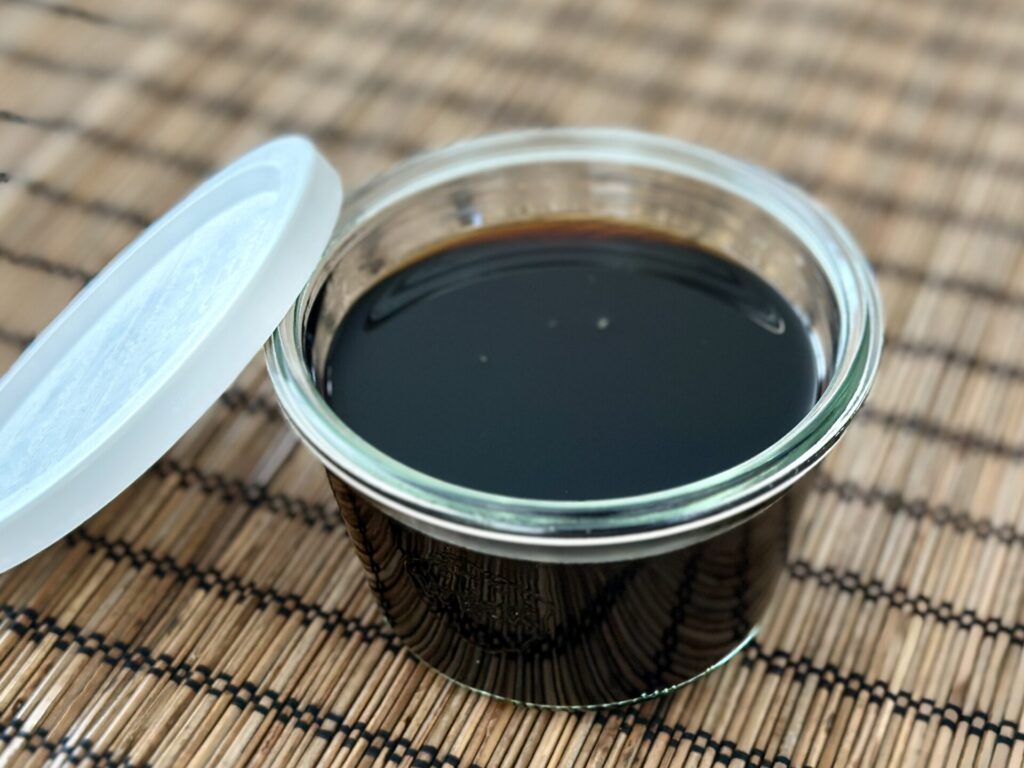Ozoni (お雑煮) is a special soup with Mochi (rice cake) in it that you eat in the morning on New Year’s Day in Japan. We decorate the house with Mochi to dedicate to the New Year, and eat it to celebrate and hope for a good year. We have a big meal called Osechi along with Ozoni, but we’ll talk about that some other time.
Mizutaki (水炊き) is a kind of hot pot dish (called Nabemono or simply Nabe) in which fish or other kinds of meat and vegetables are cooked in unseasoned fish broth and dipped in tangy Ponzu sauce. It is cooked in a ceramic pot called Donabe, right at the dinner table using a portable gas stove and we eat it as we cook. It is somewhat similar to Sukiyaki. But Mizutaki is an even more perfect food for cold weather.
Sukiyaki is one of the most popular hot pot dishes in Japan. It has a sweet and salty flavor a little bit like teriyaki sauce, but with beef and vegetable in the mix, it has its own Sukiyaki taste people love so much. We usually cook Sukiyaki in a cast iron Sukiyaki pot at the dinner table using a portable gas stove and eat it as we cook. It is a perfect dinner for family or great food to enjoy with guests.
Dorayaki is one of the most popular Japanese confectioneries known as Wagashi. Anko (sweet red bean paste) is sandwiched between sweet and fluffy pancakes. It is a traditional Japanese sweet beloved by the old and young. In the Kansai region, Dorayaki is also called Mikasa, named after Mt. Mikasa in Nara Prefecture.
Anko, a sweet red bean paste, is an essential ingredient for Japanese traditional confectioneries, called Wagashi. It is a paste made with azuki red beans and sugar, and it’s used in many Japanese dishes and desserts such as pastries, cakes, mochi, and ice cream.
Nikujaga (肉じゃが) is a Japanese dish of stewed beef and potatoes in a savory sauce. The name comes from the Japanese words for meat (niku) and potatoes (jagaimo). It is one of the most beloved home-cooked dishes in modern Japanese cuisine.
Gyoza is Chinese dumplings that ground pork and vegetables wrapped in round (pasta like) flour skins and pan-fried. Isn’t Gyoza Chinese food then? What is it doing in Japanese cooking 101? Yes, gyoza is originally from Chinese fried dumplings, but it is so popular and rooted well in Japanese cooking today. It is crispy outside and juicy inside dipped in tangy sauce….mmm, it’s so good that you would not care where it is actually from.
Oyako Donburi (親子丼ぶり)or Oyakodon (親子丼) in short is chicken and egg cooked in sweet and salty broth over steamed rice in a bowl. Chicken is simmered with vegetables such as green onions or brown onions, and is often garnished with various toppings. It’s easy to make at home, and can also be enjoyed at many different establishments such as soba restaurants, udon shops and diners in Japan.
Somen are Japanese dried vermicelli noodles that are usually eaten cold during summer. Japanese summer is so hot and humid that you often loose your appetite by the end of the day. When you don’t want to eat anything, cold Somen is very nice and easy to eat. We adults like it, but our kids like it even more because not only is it tasty but also because it’s fun to eat… noodles in ice water… they like that kind of thing.
Mentsuyu (noodle sauce) is a very versatile savory sauce that gives many dishes a great Japanese flavor. This is perfect for dipping cold Soba or Somen noodles, tempura and more.
